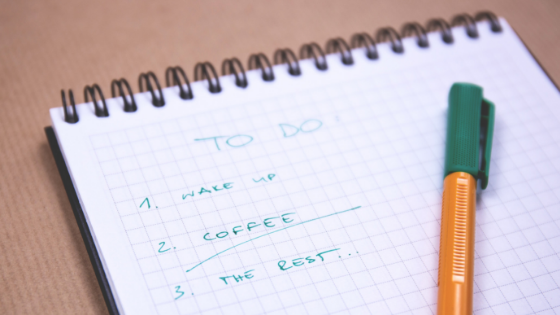by Josh Millar
I want my to-do list to feel like a useful tool, not a stressful weight. I’m sure most busy professionals can relate — sometimes my to-do list feels out of control. Sitting down to look at a disorganized, poorly-planned to-do list is probably one of the least-inspiring ways to start your day. When I’m not intentional about managing my list, some tasks end up in a state of limbo, floating from week to week, nagging, and never getting my full attention. When I take control of my to-do list though, I see a real difference in my productivity, stress levels, and even my work quality. If you want to hone your focus, accomplish more, and accelerate progress, taking some time to refine your to-do-list strategy can be incredibly useful. Here are a few ways I’ve been able to make the most of mine.
Prioritize and simplify
I have a long list that spans weeks and even months, full of both larger projects and simple easy-to-complete tasks. One strategy that I find particularly useful is creating a separate, realistic daily to-do list. Start with the fundamentals — think, pick-up-kids-from-school and make-dinner kind of fundamentals. Those are the bones, the tasks you know you’ll complete. If there’s a paperwork deadline that day or a scheduled call, those go on the list too. Then, look at your week, perhaps that longer to-do list, and identify a few tasks you can reasonably accomplish that day. Maybe it’s making an appointment you’ve delayed scheduling, logging an hour of marketing work, and finishing up a client’s paperwork. This list should feel entirely possible to complete in a day without losing your mind. If you aren’t used to creating a daily to-do list that actually gets completed every day, this can feel like a challenge. It can feel like keeping it realistic means leaving off things you need to do.
But that’s the beauty of this kind of list. It forces you to take a real look at what you can accomplish in a day. Maybe you’ve been overloading yourself. This strategy can help you see where you’re simply asking too much. And really, what’s the point of putting tasks on a list and continuing to move them to the next day? Or, perhaps you feel like you’re running around and not making any progress. This strategy can help keep you focused and on track. By creating a smaller daily list of the priorities, you won’t waste time deliberating which task to start, trying to multitask, or worrying about looming work. You can trust that you’ll have this list to work off of each day, and, if you find yourself with additional time, reach for that longer list and start crossing off things from there.
Form a habit
Habits can be powerful tools if we cultivate them properly. If you want to add a bit more structure, direction, and focus to your days with a strong to-do list, work to form a habit around creating that list. Perhaps you take 10-15 minutes each day before you leave the office or every night before bed to get organized and plan for tomorrow. I also like to look ahead to the week every Sunday and give myself an idea of how my work will spread out over the next seven days. When it becomes a part of your daily routine, you’ll gain a strong sense of what you can expect of yourself.
Eliminate Ambiguity
Your to-do list should contain actionable items — quantifiable tasks you can complete. So, when you want to effectively incorporate working towards larger goals, you should write down only what you can do that day. For example, ‘go for a run at 5pm’, as opposed to ‘get healthy’ or even ‘exercise’. The more specific you make the items on your list, the better.
Experiment
There are many apps out there designed specifically for to-do lists. If you’re on the go and often have your phone in hand, these can be a great option. If you’re more tactile and enjoy the sensation of crossing one item after another off your list, the traditional pen-and-paper option is equally useful. I don’t have a specific recommendation on a medium other than to try out a few, and stick with one that works for you.
Schedule
Including time frames on your to-do list is a great way to stay on track and accountable. I like to keep them lose, with some room for those unexpected things that are bound to pop up. For me, the real key to a great to-do list is keeping it realistic. If my list is this heavy piece of paper that I dread looking at, chances are I won’t. If I want my list to support my work and propel me forward, I need to feel like it actually fits with my daily life.
Include something fun
“Fun” could be something social, something relaxing, something creative — basically, I’m suggesting you include at least one thing you want to do, not have to do, on your list. If you’re already feeling challenged to cut your workload into a realistic daily list, this suggestion may get an eye roll. But hear me out. Keeping a healthy-work life balance is essential; and making time to do things you enjoy will ultimately help you to be more productive, efficient, and engaged in the work you do have to do. Utilize your to-do list to help you keep the balance.
These are a few of the strategies that have helped me to take control of my to-do list and use it to maximize my productivity and success. How do you make your to-do list work for you? I’d love to hear your thoughts.





